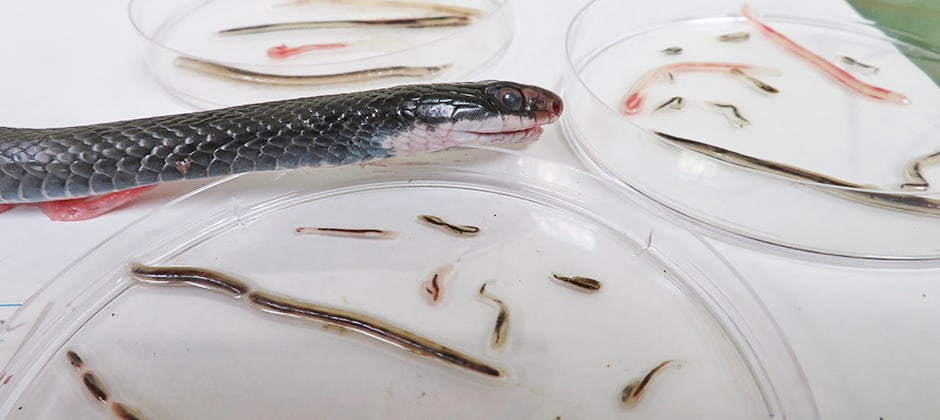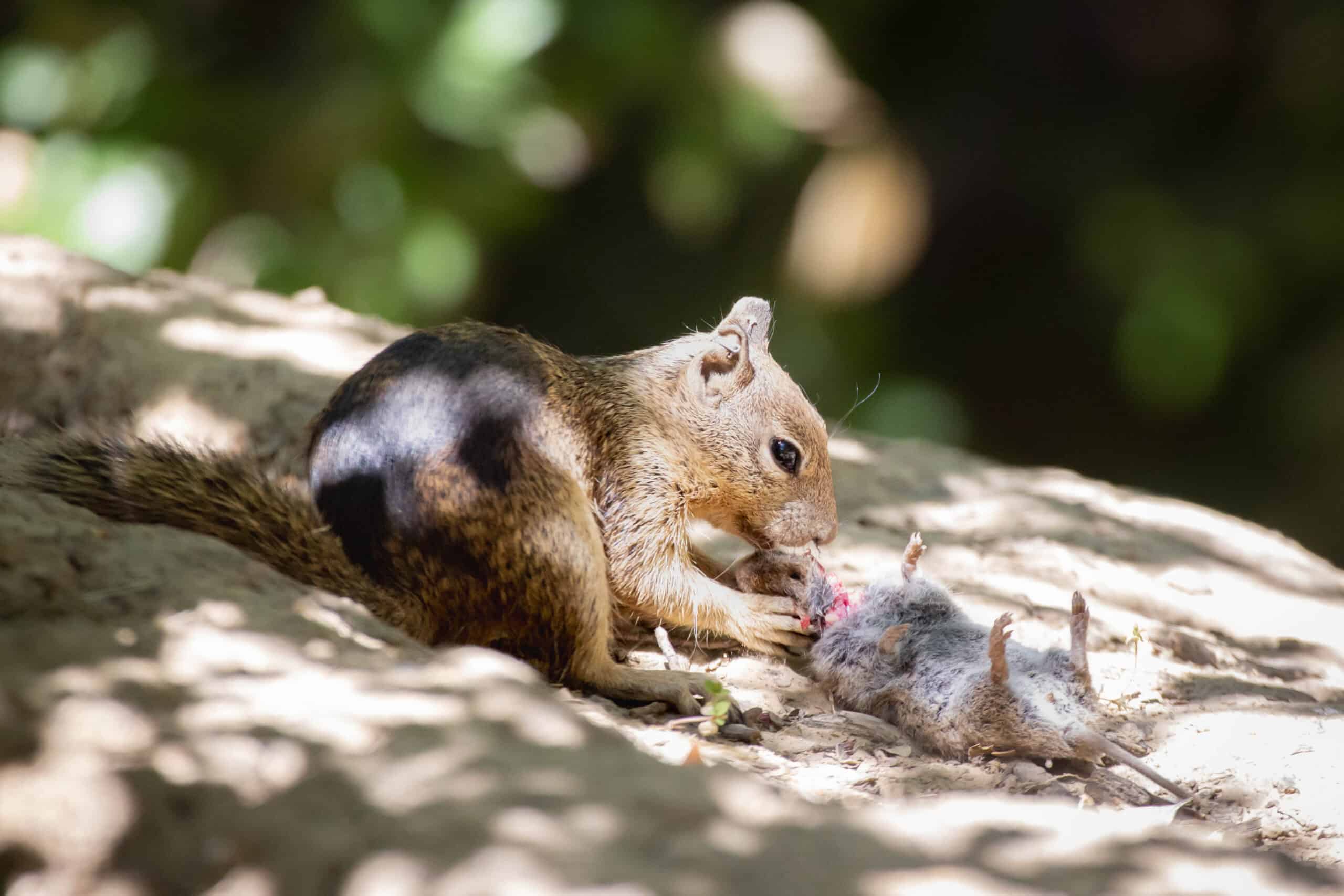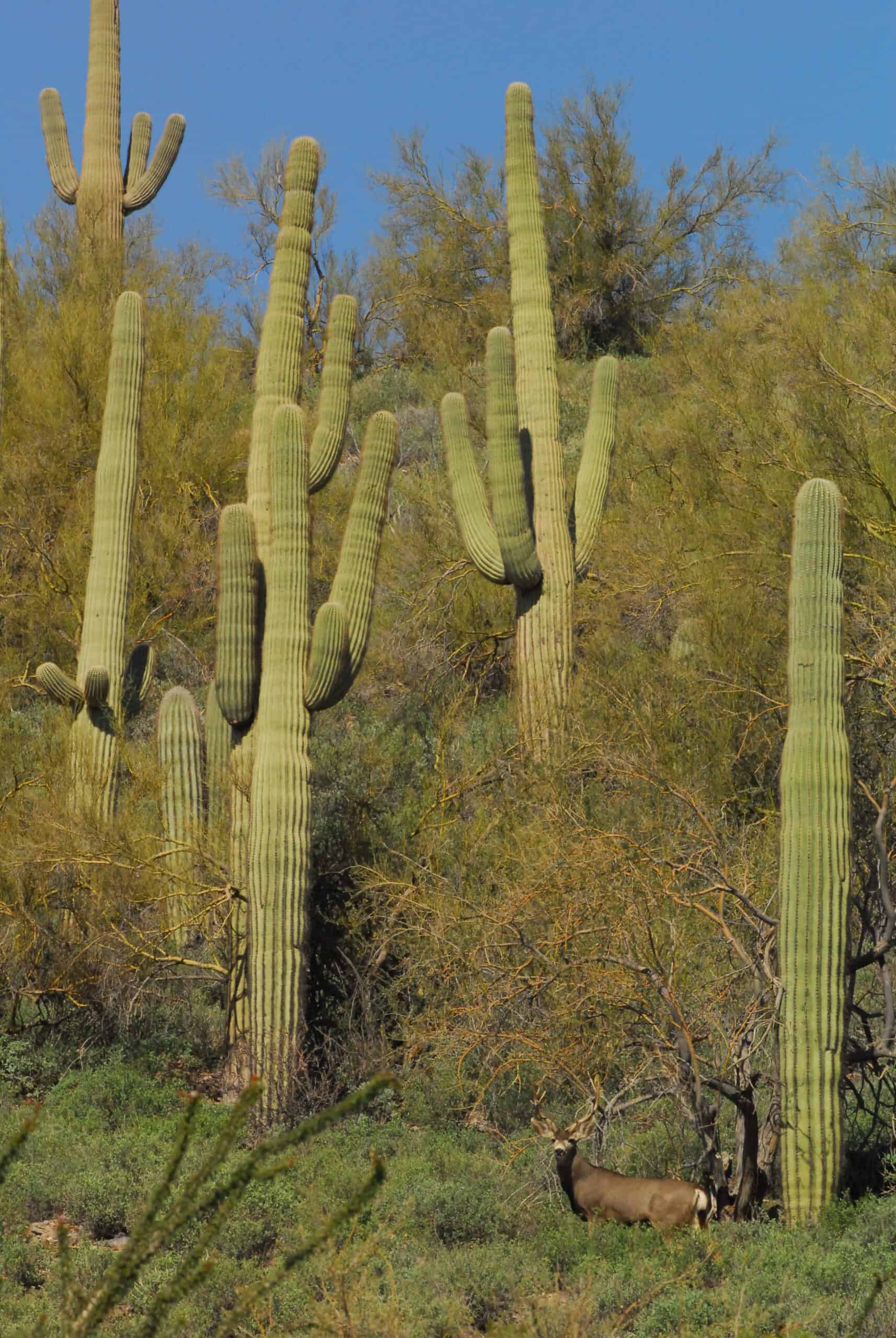Share this article
Watch: Invasive parasites spreading among Florida snakes
Invasive lung worms introduced by nonnative Burmese pythons are infecting — and possibly killing —native species of Florida snakes, and researchers say they are spreading northward and could reach other states.
“They are potentially very nasty parasites,” said Terence Farrell, a professor of biology at Stetson University in Florida and one of the researchers tracking the ongoing spread. “They basically are like leeches.”
Despite their name, lung parasites are actually crustaceans. Some species of lung parasites infect native snakes in the United States, but one species, Raillietiella orientalis, originates in Asia, where it affects Burmese pythons (Python bivittatus) and other snakes.
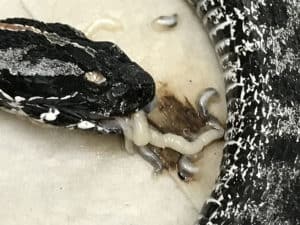
Parasites crawling from the mouth of a dead pygmy rattlesnake. ©Terence Farrell
Researchers detected the exotic parasite in southern Florida between 2004 and 2006 after collecting native snakes and sequencing their parasites’ DNA. In a 2017 study published in Ecology and Evolution, they attributed the lung parasite’s arrival to Burmese pythons — themselves an invasive problem throughout the Everglades.
Last year, Farrell and his co-authors published a study in Herpetological Review that found the invasive lung parasite had reached central Florida. They discovered it had infected pygmy rattlesnakes (Sistrurus miliarius) at Lake Woodruff National Wildlife Refuge, about 30 miles southwest of Daytona Beach — hundreds of miles north of the Everglades.
“We basically showed that this parasite is rapidly moving north and is affecting a new species,” Farrell said.
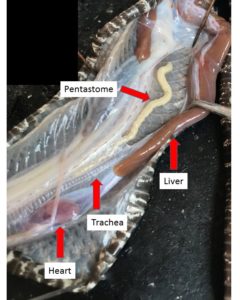
A parasite inside a dissected rattlesnake. ©Terence Farrell
Snake lung parasites travel through multiple species before ending up in the lungs of snakes, where they grow, feeding on the snake’s blood. Adult lung parasites lay eggs inside snakes, which eventually pass through the snakes’ feces. Farrell’s ongoing research suggests lizards, frogs, toads and even roaches can carry the parasite as intermediate hosts before they are consumed by snakes.
“We think that it’s leading to snake mortality,” he said. “We’ve seen population decline and just a lot of sick and dead snakes, many of which are infected by parasites.”
The 2017 paper found nine species of native snake can host the lung parasites, including black racers (Coluber constrictor), eastern indigo snakes (Drymarchon couperi) and three species of water snakes, while Farrell has recently found that scarlet king snakes (Lampropeltis elapsoides) and some species of ribbon snakes can get infected. Researchers don’t know how far north the parasite could travel, said Craig Lind, a professor at Stockton University in New Jersey and co-author on the study they did on pygmy rattlesnakes, but some host species range far beyond Florida.
“These snakes are some of America’s most interesting and charismatic snakes,” he said.
Researchers examine the inside of a pygmy rattlesnake with a camera to discover a lung parasite infection.
Researchers examine lung parasites discovered inside a dead pygmy rattlesnake in Florida.
Header Image: A black racer alongside the lung parasites that were removed from it. ©Terence Farrell



